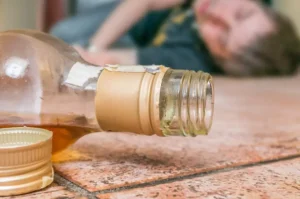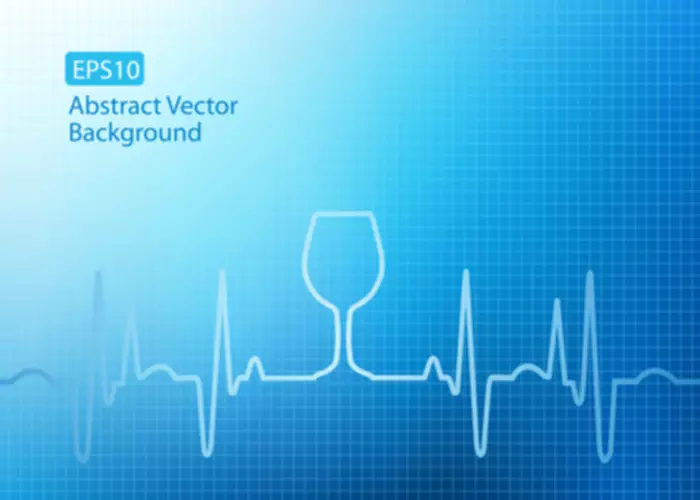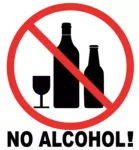Alcohol Misuse Treatment What Is Alcohol Misuse?

Several medications are available to help patients reduce drinking and maintain abstinence; however, in 2019, only 7.3% of Americans with alcohol use disorder received any treatment, and only 1.6% were prescribed medications to treat the disorder. Strong evidence shows that naltrexone and gabapentin reduce heavy-drinking days and that acamprosate prevents return-to-use in patients who are currently abstinent; moderate evidence supports the use of topiramate in decreasing heavy-drinking days. Disulfiram has been commonly https://ecosoberhouse.com/ prescribed, but little evidence supports its effectiveness outside of supervised settings. Other medications, including varenicline and baclofen, may be beneficial in reducing heavy alcohol use. Antidepressants do not decrease alcohol use in patients who do not have mood disorders, but they may help patients who meet criteria for depression to decrease their alcohol intake. Systematic policies are needed to expand the use of medications when treating alcohol use disorder in inpatient and outpatient populations.
Management of moderate to severe alcohol withdrawal syndrome
Although effective, Valproic acid use may be limited by side effects—somnolence, gastrointestinal disturbances, confusion, and tremor—which are similar to alcohol withdrawal symptoms, making assessment of improvement difficult. Patients with alcohol dependence treated for relapse prevention showed significantly lower levels of ORX in their blood. Upon measurement, the alcohol-dependent patients showed significantly higher levels of blood ORX than the control group. However, after 4 weeks of abstinence the levels of ORX decreased significantly similar to the levels of ORX in control subjects, suggesting that ORXR1 are potential target for the relapse prevention treatment and that ORX is a biomarker of alcohol relapse (Ziotkowski et al., 2016). Previous studies from von der Goltz et al, showed the involvement of ORX in the regulation of stress, affectivity and addictive behavior.
SEVERE OR COMPLICATED SYMPTOMS (CIWA-AR SCORE OF 19 OR MORE)
In another randomized trial, men taking ondansetron (8 mg twice per day) had fewer heavy drinking days compared with those taking placebo, although they did not have increased abstinence rates. The combination of ondansetron (4 μg/kg twice a day) and naltrexone (25 mg twice a day) may be effective in treating early AUD (Correa-Filho et al., 2013). Carbamazepine has been shown to be superior in ameliorating global psychological distress and reducing difference between drugs and alcohol aggression and anxiety compared to oxazepam [57]. Carbamazepine was also reported to be an effective alternative to benzodiazepines in the treatment of alcohol withdrawal syndrome in patients with mild to moderate symptoms [58]. Carbamazepine was found superior to benzodiazepines in prevention of rebound withdrawal symptoms and reducing post-treatment alcohol consumption, especially in patients who had multiple repeated withdrawals [59].

1. Benzodiazepines
Many of these drugs and medicines are known to exhibit some deleterious side effects or are only effective in some conditions. The currently used FDA approved drugs include Disulfiram, Naltrexone, and Acamprosate. These drugs were also approved by different regulatory agencies in many countries and have been used to treat AUDs for the past few decades with variable success rates. Improved medications for the treatment of binge, chronic alcohol drinking and alcohol related socio-medical problems are greatly needed. Reviews of the current literature show that many drugs and medications such as anticonvulsants, antipsychotic and antidepressants are under preclinical and clinical trials for the treatment of AUDs.


Overall, both Org and Org promoted a robust and long-lasting reduction in voluntary alcohol consumption and reversed compulsive relapse-like alcohol drinking (Molander et al., 2007; Vengeliene et al., 2010). Org has demonstrated long-lasting properties of suppressing alcohol intake in rodent models with effects superior to most drug candidates for AUD (Spanagel & Kiefer., 2008). The compound has a good safety profile and neither animal studies nor human investigations indicate a positive hedonic profile (Liem-Moolenaar et al., 2013). Excessive alcohol use is a leading cause of preventable death in the United States, with alcohol-related deaths increasing during the pandemic. The Substance Abuse and Mental Health Services Administration recommends that physicians offer pharmacotherapy with behavioral interventions for patients diagnosed with alcohol use disorder.
- Teenagers with a family history of alcohol or drug abuse are particularly advised to abstain and not experiment.
- In a double-blind placebo-controlled trial, patients were given two doses of oral nalmefene (20- or 80-mg/day for 12 weeks) for alcohol dependence.
- Despite the beneficial effects in rodent studies, the clinical utility of the Rimonabant was limited due to neuropsychiatric side effects and is not in use for AUD research.
- Expression of GHS-RIA in the hippocampus and substantia nigra, can also act on reward circuitry and modulate addictive disorders such as alcohol and tobacco addiction (Al’Absi et al., 2014; Koopmann et al., 2015, 2016).
- Supportive rather than specific treatment is indicated in patients who are undergoing withdrawal from stimulants.
However, this figure cannot be expected to mirror accurately the wide variation that exists in a large and complex country such as India. The prevalence of current use of alcohol ranged from 7% in the state of Gujarat (officially under Prohibition) to 75% in Arunachal Pradesh. If you have alcohol use disorder and want help, a healthcare provider can guide you to resources and rehabilitation programs to help you quit. The main management for severe symptoms is long-acting benzodiazepines — typically IV diazepam or IV lorazepam. When you stop consuming alcohol after prolonged, heavy use, your CNS can’t respond or regulate itself fast enough.
- Since many people underplay or minimize their drinking behavior, they tend to develop withdrawal symptoms when hospitalized for other physical problems and not for alcoholism forming a substantial part of consultation-liaison psychiatry.
- Aripiprazole (ARI), is also used for the treatment of major depressive disorder (MDD), tic disorders and autism.
- Benzodiazepines have the largest and the best evidence base in the treatment of alcohol withdrawal, and are considered the gold standard.
- In a double-blind three day long inpatient human study, 18 non-alcohol dependent volunteers were given memantine (0, 15, and 30mg) which was administered 4 hours before alcohol (1.5g/l body water) was given.
In another study use of GHS-RIA antagonist JMV2959 suppressed the alcohol consumption and deprivation effects following long term voluntary alcohol consumption. After ten months of high alcohol consumption in rats, acute JMV2959 treatment significantly decreased alcohol intake without inducing tolerance and prevented the alcohol deprivation effects. In addition, there was a significant decrease in GHS-R1A receptor expression in the VTA, proposing that a negative correlation between GHS-R1A gene and alcohol intake exists (Suchankova et al., 2013). Kaur & Ryabinin have demonstrated similar effects of ghrelin antagonist in decreasing the alcohol intake (Kaur & Ryabinin, 2010). C57BL/6J mice, when injected with 400 nmol of [D-Lys3]-Growth Hormone Releasing Peptide-6 (D-Lys3-GHRP-6, a selective ghrelin receptor antagonist) also called as DLS, showed reduced preference to alcohol with decreased alcohol intake in comparison to saline-treated control mice.
Subscribe to Harvard Health Online for immediate access to health news and information from Harvard Medical School.
The clinical presentation varies from mild to severe and the onset of symptoms typically occurs a few hours after the last alcohol intake. The most common manifestations are tremor, restlessness, insomnia, nightmares, paroxysmal sweats, tachycardia, fever, nausea, vomiting, seizures, hallucinations (auditory, visual, and tactile), increased agitation, and tremulousness. A minority of patients develop very severe alcohol withdrawal syndrome, including delirium tremens.
